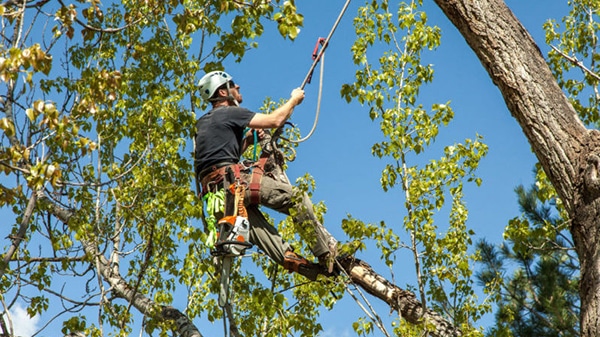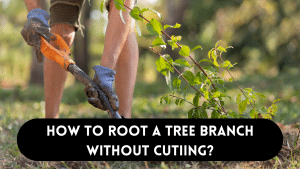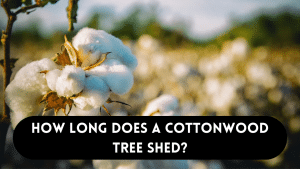In the lush world of nature, tall trees stand as magnificent giants, providing shade, shelter, and beauty to our environment. However, these towering giants can fall prey to a creeping menace – vines. Over time, vines can harm the health and stability of trees. In this comprehensive guide, we’ll outline the steps and techniques to safely remove vines from tall trees, ensuring the well-being of both the tree and the environment
Understanding the Problem: Identifying the Vines
It serves as a crucial starting point for how to safely remove vines from tall trees and identify the vines that are affecting the trees.
Deciphering the Dilemma:
It suggests that not all vines are harmful; some may even have beneficial qualities. Before you begin the process of removing vines, you need to be able to distinguish between vines that are problematic and those that are not.
The Perils of Unchecked Vine Infestation:
This part delves deeper into the consequences of allowing vines to grow unchecked on tall trees. It highlights the potential dangers of uncontrolled vine growth, such as reduced sunlight reaching the tree’s canopy, compromised air circulation, and weakened branches. These issues can collectively weaken the tree’s overall health and structural integrity.
Safety is Paramount: Preparing for the Task
Adequate preparation involves the safety of equipment and assessing potential hazards. The topmost priority when confronting tall trees and their invasive vines is safety.
The Tools of the Trade
Equipping yourself with the right arsenal is crucial. From pruning tools to safety harnesses, we will walk you through the essential equipment required for a triumphant vine removal operation.
Types of vines:
Native Vines: Native vines are plant species naturally occurring in specific regions and ecosystems. They have evolved alongside native trees and other plants, forming harmonious relationships. They can be further categorized into two types:
- Woody Invasive Vines: These vines have woody stems and can be extremely detrimental to trees. Examples include English ivy, Japanese honeysuckle, and Oriental bittersweet. They can smother, shade, and weaken host trees, eventually leading to their decline.
- Herbaceous Invasive Vines: These vines have softer, non-woody stems. While they may not be as destructive as woody invasive vines, they can still compete with trees for resources. Examples include kudzu and bindweed.
- Invasive Vines: Invasive vines are non-native species that aggressively grow in new environments. They can harm the ecosystem by smothering or damaging native vegetation
Steps to Remove Vines from Tall Trees
Now, let’s delve into the intricacies of vanquishing those encroaching vines from your towering trees. Follow these systematic steps diligently to ensure a successful and secure vine removal process.
Pruning shears: These are essential for cutting and trimming vines, especially lower ones.
Safety Harness and Climbing Equipment: If you need to climb the tree, safety gear like a harness, helmet, and ropes are crucial for your protection.
Ladder: A ladder is used for reaching higher vines while maintaining stability and safety.
Gloves: Sturdy gloves will protect your hands from thorns and any potential irritants on the vines.
Hand Saw or Pruning Saw: If dealing with woody vines, a hand saw or pruning saw may be necessary to cut through thicker stems.
Safety Glasses: To protect your eyes from debris while cutting and removing vines.
Rope or Vine Loppers: These can help cut and pull down vines from higher branches.
Bucket or Bag: To collect and dispose of the cut vines responsibly
- Commence by evaluating your tree’s overall health. A robust and thriving tree is better equipped to recover from the extraction process.
- Various vines necessitate distinct removal methods. Distinguishing vine varieties involves identifying unique characteristics such as leaf shape, growth pattern, and flowering type. This helps differentiate between vines, whether they are native, invasive, or ornamental.
- Safety takes precedence. Equip yourself with indispensable safety gear to safeguard against potential perils.
- Initiate the operation by pruning the lower vines. This will facilitate access to the higher reaches of the tree.
- Climbing tall trees presents inherent risks. Adhere to safety protocols for a secure ascent.
- Adorned with your safety gear, meticulously uproot the upper vines without inflicting harm on the tree.
- Post-extraction, maintain a vigilant watch over your tree’s health and recovery progress.
Preventive Measures:
There are preventive measures to safeguard tall trees from vine encroachment:
- Routine Inspections:
- Regularly inspect trees for early signs of vine growth.
- Identify tendrils and shoots promptly.
- Pruning and Trimming:
- Trim branches and remove new vine growth regularly.
- Prevent vines from establishing a foothold.
- Mulch and Barriers:
- Apply mulch around the tree base to deter vine growth.
- Consider physical barriers like tree collars or guards.
- Soil Health:
- Maintain healthy soil conditions to bolster tree vitality.
- Conduct soil testing and proper fertilization.
- Selective Planting:
- Opt for native plants less prone to hosting invasive vines.
- Native plants are adapted to the local ecosystem.
- Vine-Free Zones:
- Establish a designated “vine-free zone” around trees.
- Regularly remove potential vine growth near the trunk.
- Education and Awareness:
- Educate yourself and others about local invasive vines.
- Know how to identify and respond to severe threats.
- Timely Removal:
- Remove any identified vines promptly.
- Target removal during their dormant season.
- Expert Consultation:
- Seek advice from arborists or horticultural experts.
- Get guidance on preventing vine regrowth and maintaining tree health.
When Is the Best Time to Remove Vines?
The timing for removing vines from tall trees depends on the specific type of vine and the local climate. Here are some general guidelines:
Dormant Season (Late Winter to Early Spring): Removing vines when the tree is not actively growing It is typically from late winter to early spring. During this time, the tree is less stressed, making it an ideal period for vine removal.
Growing Season (Spring to Early Summer): Some vines, especially invasive ones, may need to be removed during the growing season to prevent them from spreading further. It can be done in late spring or early summer, when the vines are actively growing.
Fall: For deciduous vines, fall can be another suitable time for removal, especially if you want to prevent them from setting seeds
Year-Round Maintenance: Regular maintenance, such as trimming and pruning, can be done year-round to keep vines in check. However, major removal efforts are often best scheduled during the dormant or growing seasons.
Consider the local climate. The exact timing of cutting vines may vary depending on your local climate and the specific vine species.
FAQS
1. What are the risks associated with vines growing on tall trees?
Vines can weigh down branches, potentially causing them to break and fall. They may also hinder the tree’s growth by blocking sunlight and nutrients, making removal necessary.
2. Can I simply cut the vines at ground level to remove them from tall trees?
Cutting vines at ground level is a common first step, but it may not be enough. Many vines can sprout from their root systems. It’s usually necessary to remove them from the tree itself.
3. How should I physically remove vines from tall trees?
Carefully climb the tree using appropriate safety gear like harnesses and ropes. Starting at the base, gently peel or cut the vines away from the trunk and branches, working your way upward.
4. Is it okay to pull the vines down from the tree branches?
It’s generally best to avoid pulling vines down abruptly, as this can damage the tree’s bark and limbs. Instead, cut them into manageable sections to prevent harm to the tree.
5. What tools and equipment do I need for vine removal?
Tools like pruners, loppers, hand saws, and tree-climbing gear are essential. Safety gear, including helmets, harnesses, and gloves, is also crucial.
Conclusion
Removing vines from tall trees is a meticulous and vital endeavor that requires careful planning and execution. By following a systematic approach that includes assessing the tree’s health, identifying the types of vines, ensuring safety, and employing the right tools and techniques, you can successfully free your trees from the clutches of vines.




